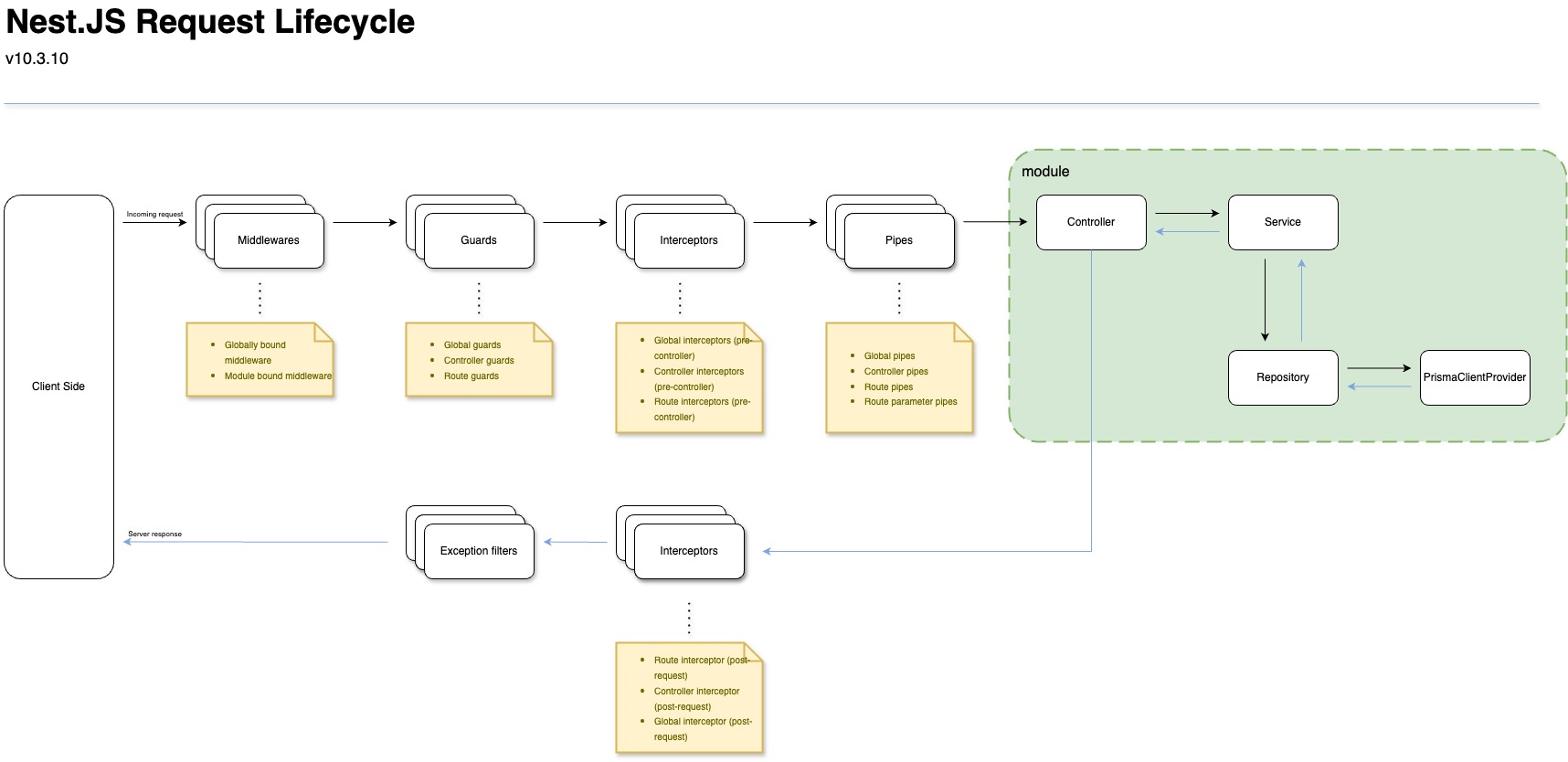-
- Database: PostgreSQL.
- ORM: Prisma
- Cache/Messaging: Redis.
- Default is integrated with OpenAPI.
This project is a boilerplate for a monorepo project using Nestjs, Prisma, PostgreSQL, Redis, OpenAPI
The system is divided into 3 main applications:
- API: The main API of the system, which is responsible for handling all the requests from the client.
- Queue: The queue system of the system, which is responsible for handling all the background tasks.
- Admin: The admin system of the system, which is responsible for handling all the requests from the admin.
The flow of the system is as follows:
- The client sends a request to the API.
- The API processes the request and sends a message to the queue. API also CRUD data to the database.
- The queue processor handles the message and save the data to the database and more.
- The admin system can be used to manage the data in the database.
graph TD
A[User] --> B[API]
B --> C[Queue Message]
B --> E[Database]
C --> D[Queue Processor]
D --> E[Database]
G[Operator] --> F[Admin]
F --> E
The project is a monorepo project, which means that all the applications are in the same repository. This allows us to share code between the applications and make it easier to manage the applications. I enabled the Monorepo mode of NestJS, which allows us to have multiple applications in the same repository.
The folder structure of the project is as follows:
- Applications:
- apps/api: The source code of the API application.
- apps/api/auth: The source code of the Auth module.
- apps/api/user: The source code of the User module.
- apps/queues: The source code of the Queue application.
- apps/admin: The source code of the Admin application.
- apps/api: The source code of the API application.
- Libs:
- libs/config: The configuration library.
- libs/database: The primary database connection library.
- libs/extends: The library for extending the functionality of the system. Example: library connect to the third-party service such as AWS, Google Cloud, etc.
- libs/guards: The library for the guards of the system.
- libs/middlewares: The library for the middlewares of the system.
- libs/modules: The library for the modules of the system.
- libs/modules/user: The authentication module.
graph TD
A[apps] --> B[api]
A --> C[queues]
A --> D[admin]
B --> E[auth]
B --> F[user]
G[libs] --> H[config]
G --> I[database]
G --> J[extends]
G --> K[guards]
G --> L[middlewares]
G --> M[modules]
M --> N[user]
So, i think this is a good structure for a monorepo project. It is easy to manage and easy to share code between the applications.
Example: The libs/modules/user library can be used in the API and Admin applications. In API SignUp, API application can be use the UserModuleLib to create a new user.
Detail of the folder structure can be found here.
The request lifecycle of a Nest.js application is as follows:
The detail of the each component can be found here.
- 📧 Author - minhhahao







